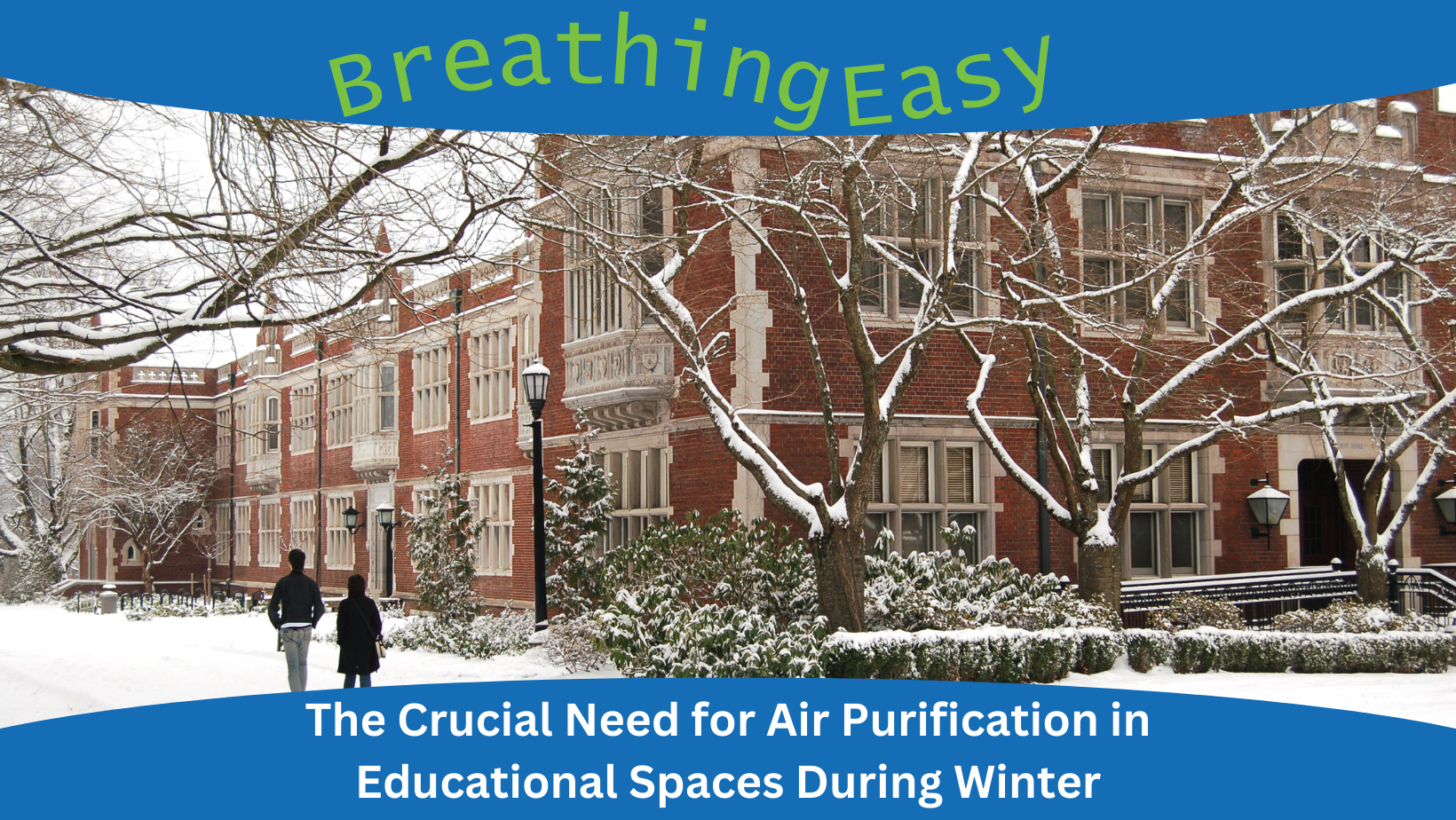
As winter blankets schools and campuses in a chilly embrace, the focus naturally shifts to keeping students warm and healthy. However, one often overlooked aspect of winter wellness is the quality of indoor air. In the wake of the COVID-19 pandemic and the perennial threats posed by seasonal viruses, the need for air purification in classrooms and educational facilities becomes increasingly evident. Hughes Environmental knows the importance of air purification during the winter months, emphasizing its role in creating a healthier and more conducive learning environment:
-
Reducing the Spread of Respiratory Illnesses: Winter is synonymous with cold and flu season, and educational institutions can quickly become breeding grounds for respiratory illnesses. Proper air purification systems equipped with HEPA filters can help trap and eliminate airborne viruses, bacteria, and allergens, thus reducing the risk of contagion and promoting a healthier atmosphere for both students and educators.
-
Mitigating the Impact of Stagnant Air: Winter often brings a reluctance to open windows and allow fresh air into classrooms. As a result, indoor air can become stagnant, trapping pollutants and exacerbating respiratory issues. Air purifiers play a crucial role in circulating and cleaning the air, ensuring that students and faculty breathe in a consistently fresh and purified environment.
-
Addressing Indoor Allergens: For many individuals, winter brings relief from outdoor allergens like pollen. However, indoor allergens such as dust mites, mold spores, and pet dander can still pose a threat. Air purifiers equipped with filters designed to capture these particles can significantly reduce allergen levels, providing relief for students and staff with allergies or asthma.
-
Enhancing Concentration and Cognitive Function: Clean air is not only beneficial for physical health but also for cognitive function. Poor indoor air quality can lead to fatigue, headaches, and a lack of concentration. By investing in air purification systems, educational institutions can create an environment that supports optimal cognitive performance, benefiting both teaching and learning.
-
Addressing the Concerns of Airborne Viruses: The ongoing awareness of airborne viruses, including the novel coronavirus, has highlighted the need for comprehensive indoor air quality management. Air purifiers equipped with advanced filtration technologies can help mitigate the risk of airborne transmission, providing an additional layer of protection against infectious diseases.
-
Fostering a Sense of Well-Being: Beyond the physical benefits, clean and purified air contributes to an overall sense of well-being. Students and educators alike thrive in environments that prioritize health and safety. Air purification fosters a positive atmosphere that supports not only academic achievement but also the mental and emotional well-being of everyone in the educational community.
As winter settles in, educational institutions must extend their commitment to the well-being of students and staff to the air they breathe. Air purification is not merely an amenity but a necessity in creating a safe, healthy, and conducive learning environment. By investing in these systems, schools and campuses can ensure that the winter months are not just a time of academic rigor but also a season of well-being, where students can breathe easy and focus on their educational journey without compromising their health.

